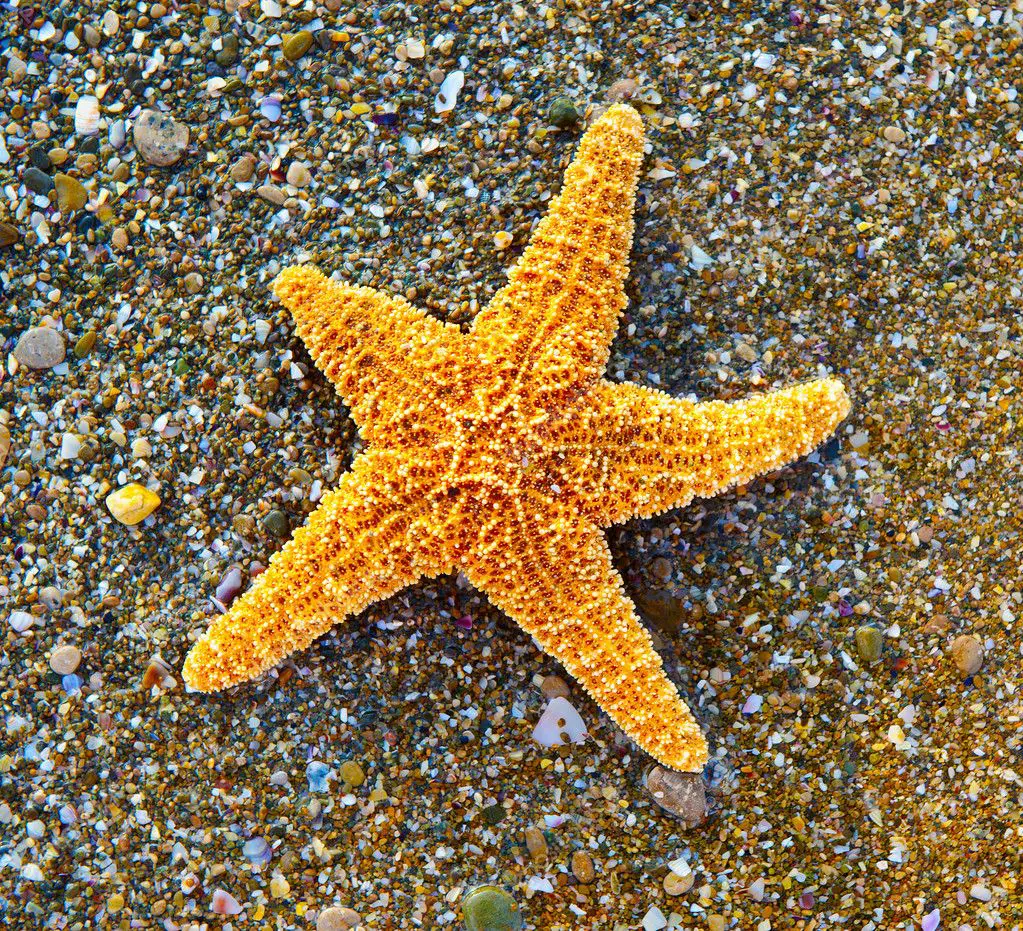Do Starfish Have Bones

Introduction
Do Starfish Have Bones: Beneath the cerulean waves of the world’s oceans, a fascinating world of marine life thrives, each species equipped with its unique adaptations and mysteries. Among these captivating creatures are starfish, or sea stars, renowned for their intriguing appearance and enigmatic behaviors. As we embark on a journey to explore the depths of starfish anatomy, a curious question arises: Do starfish have bones?
Our quest to unravel this mystery takes us deep into the heart of marine biology and anatomy, seeking to understand the structural composition of these iconic marine invertebrates. Starfish, with their radial symmetry and intricate tube feet, are emblematic of ocean life, yet the presence or absence of bones in their bodies remains a topic of fascination and debate.
To answer the question of whether starfish have bones, we delve into the unique characteristics of their skeletal system, the hidden intricacies of their biology, and the evolutionary adaptations that have shaped their form and function. We will uncover the truth about the supportive structures that underpin their remarkable bodies.
Furthermore, our exploration extends beyond the realm of anatomy, venturing into the ecological significance of starfish in marine ecosystems. Understanding the role of their skeletal components in their daily lives and interactions with other marine life will provide insights into their place in the complex web of ocean life.
Join us on this captivating voyage as we unveil the mysteries of starfish anatomy, dispel myths, and discover the truth about whether these enchanting marine creatures possess bones. In doing so, we gain a deeper appreciation for the wonders of the ocean and the intricate adaptations that enable life to flourish beneath the waves.

How many bones do starfish have?
They are part of the larger group of animals called INVERTEBRATES. We have a backbone and fish have a backbone, but sea stars and their cousins DO NOT have bones. Therefore they are referred to as invertebrates. Invertebrate means without a backbone.
Starfish, also known as sea stars, do not possess any bones. Instead, they have a distinctive internal structure that differs significantly from vertebrate animals, which have skeletons made of bones. Starfish belong to the phylum Echinodermata, and their bodies are primarily composed of a tough, flexible dermal layer. This dermal layer is covered with small, calcified plates called ossicles, which provide support and protection but are not classified as bones. The ossicles are arranged in a way that gives starfish their characteristic radial symmetry, typically with five arms extending from a central body disk. The absence of bones in starfish is a critical adaptation to their aquatic lifestyle and plays a crucial role in their unique physiology and ability to regenerate.
Do starfish have no bones?
Although starfish are invertebrates, they do have a kind of skeleton. The bodies of starfish are composed of calcium carbonate plates, known as ‘ossicles’. These form the endoskeleton, which takes on a variety of forms such as spines and granules.
Correct, starfish indeed have no bones. Their skeletal system is fundamentally different from that of vertebrate animals like mammals, birds, or reptiles, which possess true bones. Instead, starfish rely on a combination of a water vascular system and calcified ossicles to provide support and structure to their bodies. The water vascular system is a hydraulic system that helps starfish move, feed, and maintain their internal pressure. It also aids in locomotion by controlling the movement of water into and out of tube feet located on the underside of their arms.
The calcified ossicles, although not bones, are strategically arranged to maintain the starfish’s radial symmetry and protect their delicate internal organs. These ossicles can be seen as a form of an exoskeleton. This unique combination of adaptations allows starfish to thrive in their marine environments, enabling them to move efficiently, capture prey, and even regenerate lost body parts.
Starfish do not possess any bones, but they have evolved a remarkable internal structure and physiological system adapted to their life in the oceans. Their ossicles and water vascular system, along with their ability to regenerate, are essential features that make starfish unique and fascinating creatures in the marine world.
Do starfish have backbone?
Starfish, like their close relatives sand dollars and sea lilies, are invertebrates, animals without backbones. It’s no wonder scientists prefer to call them “sea stars.”
No, starfish do not have a backbone. Starfish belong to the phylum Echinodermata, and their internal structure is vastly different from vertebrate animals, which have a backbone, also known as a vertebral column or spine. Instead of a backbone, starfish have a system of calcium carbonate plates called ossicles, which make up their endoskeleton. These ossicles provide structural support and protection for the starfish but do not resemble a vertebrate backbone in any way. Starfish typically have a body plan characterized by a central body disk and multiple arms, often arranged radially around the central disk, giving them their distinctive appearance.
Do starfish have hearts?
Starfish don’t possess a heart, blood, or a brain. Rather, they possess a water vascular system that circulates saltwater throughout their entire body and through their tube feet..
No, starfish do not have hearts like those found in many vertebrate animals. Instead, they have a unique circulatory system suited to their marine environment. Starfish have a water vascular system, which is a hydraulic system that helps them with locomotion, respiration, and circulation of nutrients and oxygen. This system involves a series of canals and tube feet that are filled with sea water. The tube feet extend from the starfish’s body and play a role in movement, gas exchange, and nutrient transport.
The absence of a traditional heart is another adaptation to their lifestyle. Instead of a central pump-like organ, the starfish’s circulatory system relies on the hydraulic pressure created by the movement of fluid within the water vascular system. This fluid movement allows for the circulation of nutrients and oxygen throughout the starfish’s body. The starfish’s unique circulatory system is a testament to the diverse ways in which different organisms have evolved to adapt to their specific environments and lifestyles.
In summary, starfish do not have a backbone, and they lack a traditional heart. Their internal structure, which includes ossicles and a water vascular system, is well-suited to their life in the ocean, enabling them to move, feed, and thrive in their underwater habitats.
Do sea stars have a brain?
Starfish, also known as Sea Stars, are one of the most beautiful looking animals in the vast ocean. They have a surprisingly unusual anatomy, with no brain or blood, yet are able to digest food outside their body. Regenerating their own arms is perhaps one of the most useful things a starfish can do.
No, sea stars, also known as starfish, do not have a centralized brain like many animals with more complex nervous systems, such as mammals or birds. Instead, their nervous system is decentralized. Sea stars have a ring-shaped or radial nerve located around their mouth, which functions somewhat like a simple brain, but it does not have the same complexity as a vertebrate brain. This nerve ring helps coordinate basic movements and sensory responses. However, it is important to note that starfish do not possess the cognitive capabilities or complex behaviors associated with animals that have centralized brains.
Do starfish have 5 hearts?
02Starfish does have a brain. 03They also don’t have blood and a heart. 04Instead of blood, they have a water vascular system. That system pumps seawater through the tube feet and throughout the starfish’s body.
No, starfish do not have five hearts. Starfish have a very different circulatory system compared to animals with a centralized heart. Instead of a heart, they have a unique hydraulic system known as the water vascular system, which serves various functions, including movement, respiration, and the circulation of nutrients and oxygen throughout their body.
The water vascular system consists of a series of canals and tube feet that are filled with seawater. These tube feet extend from the starfish’s body and play a role in locomotion, gas exchange, and nutrient distribution. The movement of seawater within this system creates hydraulic pressure, allowing starfish to extend and contract their tube feet for movement and to perform various functions, such as capturing prey.
In summary, starfish do not have hearts, and their circulatory system relies on the water vascular system, which is adapted to their marine environment and serves as an efficient means of maintaining essential life processes.
Are starfish blind?
While sea stars don’t exactly see like we do, they definitely aren’t blind. Instead of eyeballs, sea stars have tiny eye ‘spots’ embedded beneath the skin of each arm.
Yes, starfish are considered to be blind because they do not have true eyes or a well-developed visual system. They rely on other sensory mechanisms to navigate their environment and locate prey. Instead of eyes, starfish have specialized structures called eyespots or ocelli located at the tips of their arms. These eyespots are sensitive to light and can detect changes in light intensity, allowing starfish to distinguish between light and dark areas in their surroundings. However, they cannot form detailed images or perceive objects as animals with more advanced visual systems can. Starfish primarily rely on their sense of touch, chemoreceptors, and their ability to detect chemicals in the water to locate prey and navigate their environment.
Do starfish have five brains?
They have no brain or blood
Starfish don’t actually have a brain, or even blood! In fact, they use filtered sea water to pump nutrients through their nervous system instead.
No, starfish do not have five brains. They have a decentralized nervous system with a simple nerve ring or nerve plexus located around their mouth, which serves as a basic control center for coordinating movements and responding to stimuli. Unlike some animals with multiple brains or ganglia in different body segments, starfish do not possess such a system. Instead, their decentralized nervous system is well-suited to their radial symmetry and allows them to coordinate their actions effectively, such as capturing prey and avoiding predators. While starfish may have ganglia or clusters of nerve cells in each arm, these do not function as separate brains but work in coordination with the central nerve ring.
In summary, starfish do not have centralized brains or multiple hearts, and they rely on a combination of sensory mechanisms to survive in their aquatic habitats. Their unique adaptations and biology make them fascinating creatures in the world of marine life.

Conclusion
In our quest to unveil the mystery of whether starfish have bones, we have journeyed into the depths of marine biology and explored the intricacies of these fascinating marine creatures. As we conclude our exploration, we find ourselves at the intersection of science, wonder, and the remarkable adaptations that define life in the ocean.
The answer to the question of whether starfish have bones is both yes and no. Starfish do not possess true bones, as mammals or vertebrates do, but they do have a unique internal skeletal system known as an endoskeleton. This endoskeleton is composed of calcium carbonate plates and spines that provide structural support to their bodies and help maintain their distinctive shape.
Our journey into starfish anatomy has revealed the delicate balance of rigidity and flexibility that this endoskeleton provides. It is a testament to the evolutionary marvels that have allowed starfish to thrive in the dynamic marine environments they call home.
Beyond the realm of anatomy, we have explored the ecological significance of starfish in marine ecosystems. Their skeletal components play a vital role in their interactions with prey, predators, and their overall survival. Starfish exemplify the interconnectedness of life in the ocean, reminding us that every species, no matter how seemingly simple or complex, has a unique place in the intricate tapestry of marine life.
As we part ways with our starfish companions, we carry with us a deeper understanding of the ocean’s mysteries and the remarkable adaptations that enable life to flourish beneath the waves. The enigma of starfish anatomy will continue to captivate and inspire, inviting future generations to explore the hidden wonders of the marine world.



